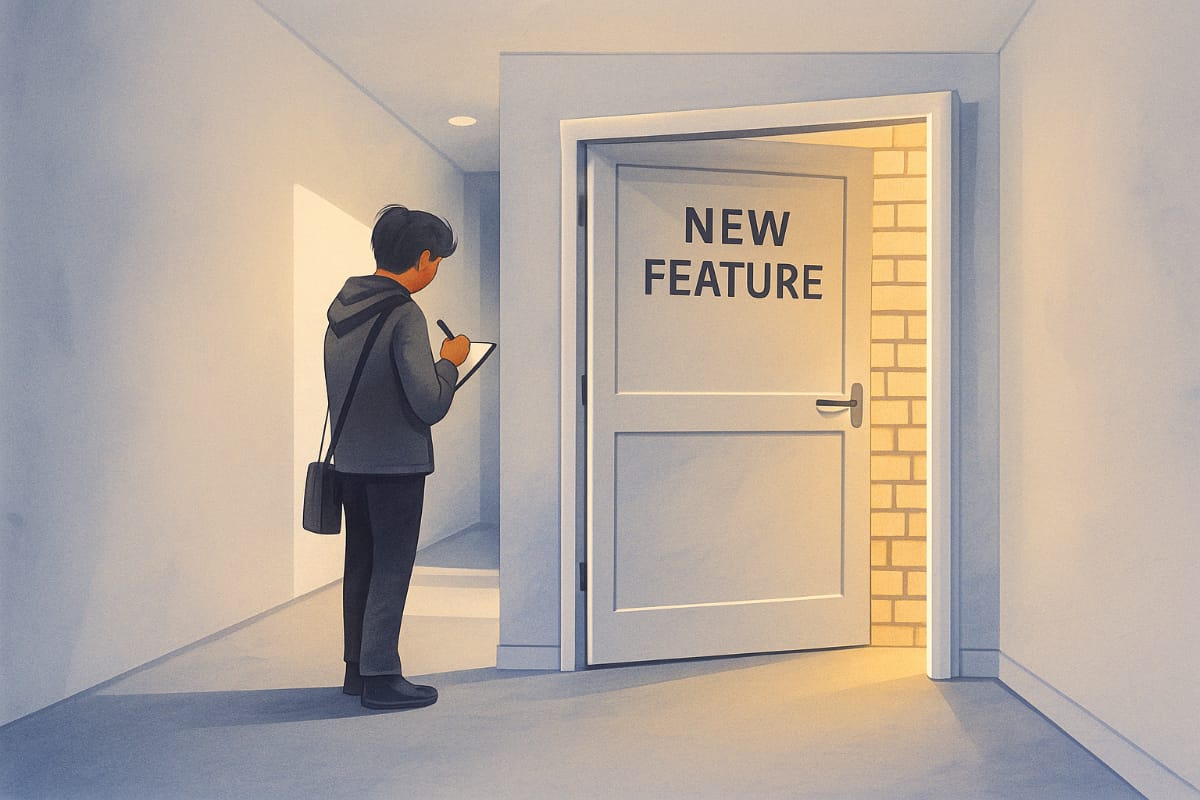Are Your Experiments Killing Innovation?
Does your team runs dozens of experiments every month? Let's explore how great product teams turn experimentation into true discovery, and why organizations get this wrong.

Executive Summary
In today’s product world, teams run endless experiments but not all learnings lead to innovation. While experiments validate what exists, innovation redefines what’s possible. The two are interconnected, yet distinct. Modern companies often confuse them, chasing incremental gains while starving breakthrough ideas.
This blog tries to bridge that gap, outlining actionable checklists for Product Managers and Product Leaders, showing how disciplined experimentation can become the foundation for true innovation.
Why now?
Because data-driven cultures have reached a saturation point. Organizations are excellent at testing but hesitant to imagine. With AI accelerating decision cycles and markets shifting faster than ever, rediscovering why and how we experiment is no longer optional, it’s strategic survival.
Context: Death By A 1000 Experiments
Many teams fall into common product experimentation pitfalls treating tests as progress or success. This section explores these common experimentation mistakes and how they hinder true innovation, helping you identify and correct them to build a stronger experimentation culture.
In most modern product organizations, experimentation has become a badge of honor. Dashboards overflow with A/B tests. Product reviews celebrate velocity and “learning.” Yet, beneath the surface, innovation feels scarce. We’ve mistaken testing for progress.
The problem isn’t experimentation itself, it’s the intent behind it. We experiment to confirm, not to discover. We optimize what already exists, rarely daring to question if we’re even solving the right problem. As Teresa Torres notes in Continuous Discovery Habits, discovery is exploration.
Without curiosity, experimentation becomes a ritual of confirmation.
Why It Matters
When experimentation is reduced to optimization, organizations lose their edge. Teams get faster, but only at running in circles. The impact shows up quietly: stagnant growth, tricky sales tactics, risk-averse decision-making, and disengaged talent.
This confusion matters more than ever. In an age where AI and automation compress feedback loops, and competition can replicate features overnight, experimentation without imagination leads to mediocrity.
The most dangerous thing a company can do is learn faster about the wrong things.
Innovation thrives when experiments serve a bigger purpose. It’s not just the number of tests that matters, it’s what those tests are in service of. Organizations that connect experimentation to strategy turn curiosity into a competitive advantage.
Experimentation Checklist for Product Teams
Most experiments fail quietly, not because the ideas were bad, but because the intent was blurry. We run tests to feel in motion, to collect metrics, to “validate” things we already believe, or sometimes just to check a box.
But real experimentation isn’t validation. It’s the art of asking, “Which assumptions behind our hypothesis hold true and which don’t?” and then letting data answer.
Here’s how to run experiments that don’t just optimize what exists, but illuminate what’s next:
1. Start with a Tension
Every meaningful experiment begins with a hypothesis, but a good one begins with tension: a friction point between what you believe and what might be true.
David Bland, co-author of Testing Business Ideas, outlines a simple process to make your assumptions explicit and prioritize your tests.
Step 1. Write down your hypothesis and categorize them by Desirability, Feasibility, Viability and Adaptability.
Step 2. Map each one on a 2x2 grid of Important X Evidence.
Step 3. Prioritize the assumptions that land in the Important x Low Evidence quadrant.
2. Iterate Rapidly and Fail Fast
Ever heard of the sunk cost fallacy? The more resources you pour into an idea, the harder it becomes to let go, even when the evidence tells you to. To minimize that trap, test your riskiest assumption by spending as little time and money as possible.
Don’t get me wrong, the experiment still needs to be meaningful. The goal is to eliminate risk quickly and learn faster than your attachment can grow.
The smaller your test, the faster your learning. Aim to design and deliver such tests within a single sprint or even a week to quickly break assumptions and maintain momentum.
Ask yourself: What’s the smallest experiment that could prove me wrong?
A mockup? A signup page? A fake button that goes nowhere?
You’re not testing if it works. You’re testing if it’s worth building.
3. Draw the Line Before You Cross It
Metrics. Metrics. Metrics. Post-hoc justification is the death of learning. Don’t try to draw conclusions from a coin toss and call it science.
Before you launch, define your thresholds or success/failure criteria:
- What metric will signal “go”?
- What result means “stop”?
- What anomalies are worth exploring, even if the outcome’s a fail?
4. Re-frame the Problem Continuously
Experimentation without iteration is like sailing without a compass.
Talk to users every week, not to validate ideas, but to re-frame them. It’s not a linear path; it’s a rhythm.
Idea → Hypothesis → Experiment → Evaluate
Your goal isn’t more tests. It’s a stronger sense of why each one matters.
5. Measure Learning Velocity, Not Output Velocity
Speed is meaningless if you’re not learning.
A “good week” isn’t when you run three experiments, it’s when one of them changes how you think.
Document every learning in a visible Experiment Library.
The goal isn’t to accumulate wins, it’s to accumulate truths.
Because innovation doesn’t come from data points; it comes from connecting them.
6. Know When to Stop
Testing can become an addiction, a safety blanket against hard decisions. But experiments are only useful if they force one.
- If your results are directionally clear, move. 👍
- If they’re inconclusive, reframe. 🪟
- If they’re irrelevant, kill them. ✂️
7. Ask the Question No Dashboard Can Answer
After every test, pause and ask:
Did this teach us something new about the customer?
Unless you’re deliberately testing the reliability of what’s known, there’s little value in experiments that only reaffirm past discoveries.
Innovation begins when a test surprises you.
When it reveals not what users do, but why they hesitate.
8. Balance Your Portfolio - Explore and Exploit
You want a good mix of experiments that 1) are aimed at solving problems based on current knowledge (exploit) of your product and 2) leap into uncertainty (explore) for better outcomes in the future.
Exploitation refines what we know.
Exploration searches for what we don’t.
Without both, your product either stagnates or burns out.
Experimentation Checklist for Product Leaders: Turning Experiments into Innovation
This section focuses on innovation strategy, organizational agility, and leadership in experimentation, providing executives and senior leaders with a roadmap to connect experimentation with long-term business outcomes and competitive differentiation.
If Product Managers are the hands-on experimenters, Product Leaders are the architects of the system that turns learning into leverage. Their job isn’t just to nurture culture, it’s to connect experimentation to business outcomes: influencing portfolio decisions, directing capital toward validated opportunities, differentiating through innovation, and measuring ROI on learning. This is how experimentation moves from cultural principle to executive strategy.
1. Build Safety for Smart Failure
Failure is not the opposite of success, it's the evidence of exploration. Leaders make failure safe by rewarding transparency, documenting insights from failed experiments, and distinguishing between reckless failure (avoidable errors) and smart failure (calculated risks taken with clear hypotheses). Building safety also starts with leader vulnerability: admit what you don’t know, share your own learnings, and model curiosity.
Encourage “learning showcases,” not just demo days. Let teams tell the story of what they learned, not just what they shipped.
2. Innovation By Design
As highlighted in In Search of Excellence: Lessons from America's Best Run Companies by Peters and Waterman, 3M’s true strength lies in embedding innovation into its very culture, not just allocating time for it, but empowering individuals to act as champions for their ideas and ensuring management support for experimentation. The company fosters ownership, advocacy, and cross-functional collaboration, creating an environment where ideas can move from conception to execution without being stifled by hierarchy.
To mirror that philosophy, organizations should encourage individual ownership, provide easy pathways from idea to prototype, ensure leadership sponsorship so innovators aren’t isolated, and promote cross-functional collaboration to keep ideas grounded and actionable.
3. Build the Infrastructure for Experimentation and Organizational Agility
Infrastructure isn’t just about tools, it’s about creating the systems and rhythms that make learning agile and organization-wide. Beyond analytics, feature flags, and experimentation platforms, leaders should invest in process infrastructure that accelerates time-to-insight, reduces decision risk, and strengthens adaptability. This includes establishing review cadences, data literacy programs, and well-documented feedback loops that connect learnings directly to business decisions.
4. Balance and Manage Your Innovation Portfolio
Leaders should actively manage the innovation portfolio as part of company strategy. Balancing exploration and exploitation is a strategic exercise in risk diversification. Track how learning investments map to core, adjacent, and transformational opportunities.
Use quarterly reviews to rebalance, ensuring resources flow to both short-term wins and long-term bets. By treating experimentation like a portfolio of strategic bets, leaders align learning with business growth and market resilience.
5. Institutionalize the Science of Assumptions
Leaders should embed assumptions testing into the organization’s DNA. Make it part of onboarding, create capability-building programs around hypothesis design, and model it through leadership behavior. When leaders openly challenge their own assumptions and invite teams to do the same, assumption-testing evolves from a skill into a shared mindset that shapes how the entire company learns and innovates.
6. Create Rituals that Drive Reflection into Strategy
Reflection shouldn’t be a ceremonial pause. It should be a lever for change. Link your learning rituals directly to strategic adaptation by reviewing how experiment insights influence roadmap direction, investment decisions, and team priorities. When reflection becomes a mechanism for evolving strategy, your organization stops just learning. It starts transforming.
7. Build Narratives from Data
Numbers don’t inspire people, stories do. Your role as a leader is to help translate metrics into meaning, aligning teams around shared understanding. When leaders craft coherent narratives from data, they transform isolated insights into shared wisdom that scales across distributed organizations. Narrative alignment turns experimentation into a company-wide learning engine, ensuring that data drives not just knowledge but collective momentum.
Frame experiments as chapters in your company’s ongoing discovery story. Innovation needs storytellers as much as it needs scientists.
8. Protect the Long Game
Innovation rarely fits within quarterly OKRs or immediate ROI expectations. To make this tangible, leaders can create innovation funds, long-term OKRs focused on discovery, or sandbox budgets for experimental ideas. These mechanisms protect curiosity from short-term pressure and ensure that bold ideas get the space, and the time, to mature into meaningful breakthroughs.
Executives often demand immediate ROI from experiments, but innovation rarely fits quarterly OKRs. Protect the horizon work. Carve out budget and patience for ideas that take time to mature.
9. Model Intellectual Humility
The best signal of a healthy experimentation culture is when leaders say, “I don’t know, let’s test it.”
Show your teams that uncertainty isn’t weakness, it’s leadership in its purest form.
And remember, humility must cascade: leaders should reward teams for challenging leadership assumptions, not just their own hypotheses.
10. Connect the Dots Across Teams
Innovation thrives in collisions but collisions need structure. Facilitate cross-team learning through internal repositories, quarterly innovation guilds where teams exchange insights, failed hypotheses, and emerging trends. These scalable connection rituals ensure discoveries don’t stay trapped within silos but instead compound into organizational intelligence.
Conclusion
Experimentation is how we learn. Innovation is what we do with that learning. When organizations treat these as separate, they optimize the present but miss the future. The bridge between them is intent.
For Product Managers, that means running experiments that reveal new truths. For Product Leaders, it means creating the systems and incentives that turn those truths into strategy.




